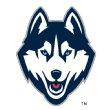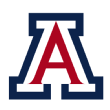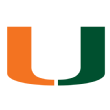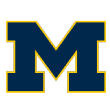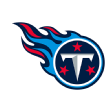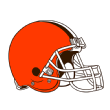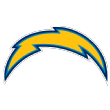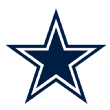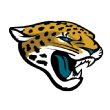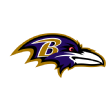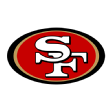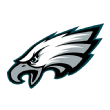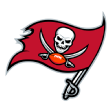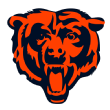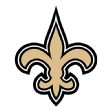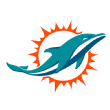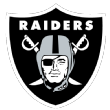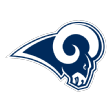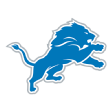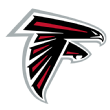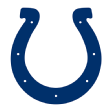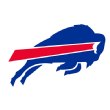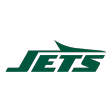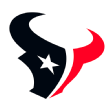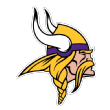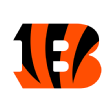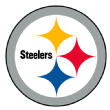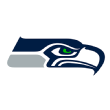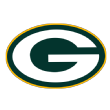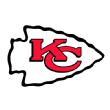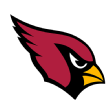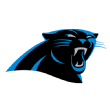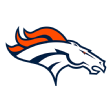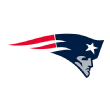Who joins Kawhi Leonard on All-Defensive teams?
The NBA's Defensive Player of the Year award has traditionally been the province of big men, and
ESPN's real plus-minus backs that logic.
It takes a special perimeter player to be the NBA's best defender.
San Antonio Spurs forward
Kawhi Leonard, last year's Defensive Player of the Year and the first non-big man to win since Ron Artest in 2003-04, is just such a transcendent talent. Leonard leads my picks for this year's All-Defensive Teams, made using a combination of scouting and statistical analysis.
More so than offense, defense remains difficult to quantify at the individual level. Still, in addition to my own observations and those of others, I made use of metrics including defensive RPM, Synergy Sports charting and SportVU tracking on NBA.com/stats to help inform my selections.
POINT GUARD
First Team: Ricky Rubio,
Minnesota Timberwolves
When Rubio first came to the NBA and graded out as an elite defender, skepticism was understandable.
Five years into his career, it's impossible to dismiss the numbers as a fluke. Rubio's size and anticipation make him as effective defending point guards as any player at the position. His plus-2.0 defensive RPM
leads all point guards.
Second Team: Chris Paul,
Los Angeles Clippers
Paul sits right behind Rubio in defensive RPM, and not coincidentally, they rank second and third in steals per game. Although steals aren't a perfect defensive indicator --
Stephen Curry of the
Golden State Warriors, who leads the league, isn't in their class, defensively -- Paul and Rubio are able to get them without taking detrimental gambles and are also sound one-on-one defenders.
Honorable mention: Avery Bradley,
Boston Celtics;
Kyle Lowry,
Toronto Raptors;
Marcus Smart, Celtics
Bradley and Smart are the NBA's best pair of defensive guards, capable of trading defensive assignments, depending on matchups when they're on the court together. Bradley's defense on
Klay Thompson helped key Boston's upset win at Golden State earlier this month.
Like Paul, Lowry combines an excellent steal rate with strength and a low center of gravity that makes him tough to move around.
SHOOTING GUARD
First Team: Tony Allen,
Memphis Grizzlies
At age 34, Allen is still "First Team All-Defense," as he reminded everyone throughout Memphis' Game 2 win last year against the Warriors. Only Rubio had a superior steal rate, and Allen remains the league's toughest individual defender at the position, an honor
Kobe Bryant bestowed on him before their last head-to-head matchup.
Second Team: Kentavious Caldwell-Pope,
Detroit Pistons
Caldwell-Pope's finesse style is different from Allen's more aggressive defense. Caldwell-Pope has perhaps the quickest feet of any shooting guard in the league, which allows him to use his wingspan to corral smaller opponents -- he's especially effective defending point guards and did a nice job against Curry -- and keep them in front.
Honorable mention: Danny Green, San Antonio Spurs;
Andre Roberson,
Oklahoma City Thunder; Klay Thompson, Golden State Warriors
Green's shooting has slumped this season, but his defense hasn't. His
defensive RPM ranks second at the position behind Allen, though that relies more on box score stats (including impressive shot blocking for a guard) than his plus-minus impact.
Similarly, Roberson's ongoing quest to master the NBA 3 hasn't prevented him from excelling defensively.
Although Thompson's steal rate is abnormally low for an elite defensive guard, he compensates with size and agility that allow him to defend either guard spot.
SMALL FORWARD
First Team: Kawhi Leonard, San Antonio Spurs
Leonard is my choice for Defensive Player of the Year, but that wasn't as easy a call as I expected.
Leonard has only a slight edge on
Draymond Green in
defensive RPM, and he actually ranks second on his own team behind
Tim Duncan. But Leonard plays a lot more than Duncan and is more essential, and the Spurs have been better defensively than the Warriors.
Based on plus-minus data,
real plus-minus shows that big men make their teams better defensively, while guards and wings tend to produce better offense.
In other words, this is not generally an award for wing defenders. For Leonard to be, justifiably, on the verge of perhaps a second straight DPOY award is quite an accomplishment.
Second Team: Paul George,
Indiana Pacers
Quietly, the Pacers have the league's third-best defense a year after trading former Defensive Player of the Year runner-up
Roy Hibbert. Several players deserve credit, including
Ian Mahinmi in his role as Hibbert's replacement (more on him later).
However, none deserves more credit than George. He returned from a serious leg injury without missing a beat and continues to take his role as defender seriously, despite his rise as a go-to scorer.
Honorable mention: Jae Crowder, Boston Celtics;
Andre Iguodala, Golden State Warriors;
Thabo Sefolosha,
Atlanta Hawks
Crowder is every bit as important to Boston's aggressive, effective defense as Bradley and Smart. His absence was keenly felt when he missed a few weeks because of a sprained ankle.
Although Iguodala hasn't been as effective defensively this season, his presence still elevates the Warriors' small lineups at that end.
Like George, Sefolosha returned from a serious injury undiminished on D. He is the best perimeter defender on the league's second-best defense.
POWER FORWARD
First Team: Draymond Green, Golden State Warriors
Picking him second for Defensive Player of the Year is no indication of Green dropping off defensively. His ability to defend guards on switches and centers several inches taller when he plays the middle is invaluable to the Warriors' defense and unlocks their most effective lineups.
In fact, despite Green's size disadvantage, only
Jonas Valanciunas has allowed fewer points per play among defenders who have faced at least 100 post-ups, according to Synergy Sports tracking.
Second Team: Paul Millsap, Atlanta Hawks
When Millsap was drafted, the assumption was that he would be a defensive liability due to his size. (Of course, the same was true of Green. We're not great at projecting defensive ability.) It's amazing that he
leads the league in defensive win shares, according to Basketball-Reference.com.
That overstates Millsap's performance; the Hawks actually have defended slightly better with him on the bench. Nonetheless, I'm inclined to give him a great deal of credit for Atlanta's unlikely defensive dominance.
Honorable mention: Darrell Arthur,
Denver Nuggets;
Taj Gibson,
Chicago Bulls;
Justise Winslow,
Miami Heat
Several fixtures in this spot, most notably
Serge Ibaka, slumped this season. Two players return for the first time in many seasons.
Arthur, an elite defender with the Memphis Grizzlies before suffering a ruptured Achilles, has compensated for the quickness the injury cost him with experience.
After
Joakim Noah's injury, Gibson was Chicago's best interior defender by miles.
Lastly, Winslow is the lone rookie to appear in this column. His quickness and strength allowed him to overcome a size disadvantage when defending power forwards, and Erik Spoelstra also used the versatile Winslow to defend guards at times.
CENTER
First Team: Tim Duncan, San Antonio Spurs
I fear Duncan's difficulty defending against the Warriors this season, including on national TV on Thursday, might doom his All-Defensive chances. It shouldn't. Golden State is a unique defensive challenge, and Duncan has been elite against the other 28 teams.
As noted, Duncan actually has a better defensive RPM than Leonard (
and the league's best rating) because San Antonio has allowed just 93.7 points per 100 possessions with Duncan on the court,
the lowest rating for any regular player in the NBA.
Given how limited Duncan's lateral mobility is as he nears age 40, that's a testament to his intelligence and ability to put himself in the right position on D before a play needs to be made.
Second Team: Rudy Gobert,
Utah Jazz
At times this season, the Jazz have been every bit as dominant defensively as they were in posting the league's best defensive rating after they moved Gobert into the starting lineup at last year's trade deadline.
Gobert remains as difficult an obstacle at the rim as anyone in the league. He allows 41.6 percent shooting within five feet of the hoop,
according to SportVU tracking on NBA.com/Stats (only
Milwaukee Bucks reserve
John Henson has been better) and isn't as hopeless away from the basket as some modern rim protectors.
Honorable mention: Andrew Bogut, Golden State Warriors;
DeAndre Jordan, Los Angeles Clippers; Ian Mahinmi, Indiana Pacers
Bogut actually ranks
second in the entire league in defensive RPM. His on/off impact isn't as strong, however, and I think Bogut benefits to some extent from being protected against bad matchups by the Warriors' ability to go small.
Thankfully, Doc Rivers has stopped crusading for Jordan to be Defensive Player of the Year, which allows us to appreciate his improvement on D -- he's particularly good for a center at defending on the perimeter -- instead of picking apart his flimsy case.
As mentioned earlier, Mahinmi has more than just replaced Hibbert's rim protection. He has also given the Pacers more defensive versatility. He even matched up with power forwards at times when playing alongside rookie
Myles Turner.
